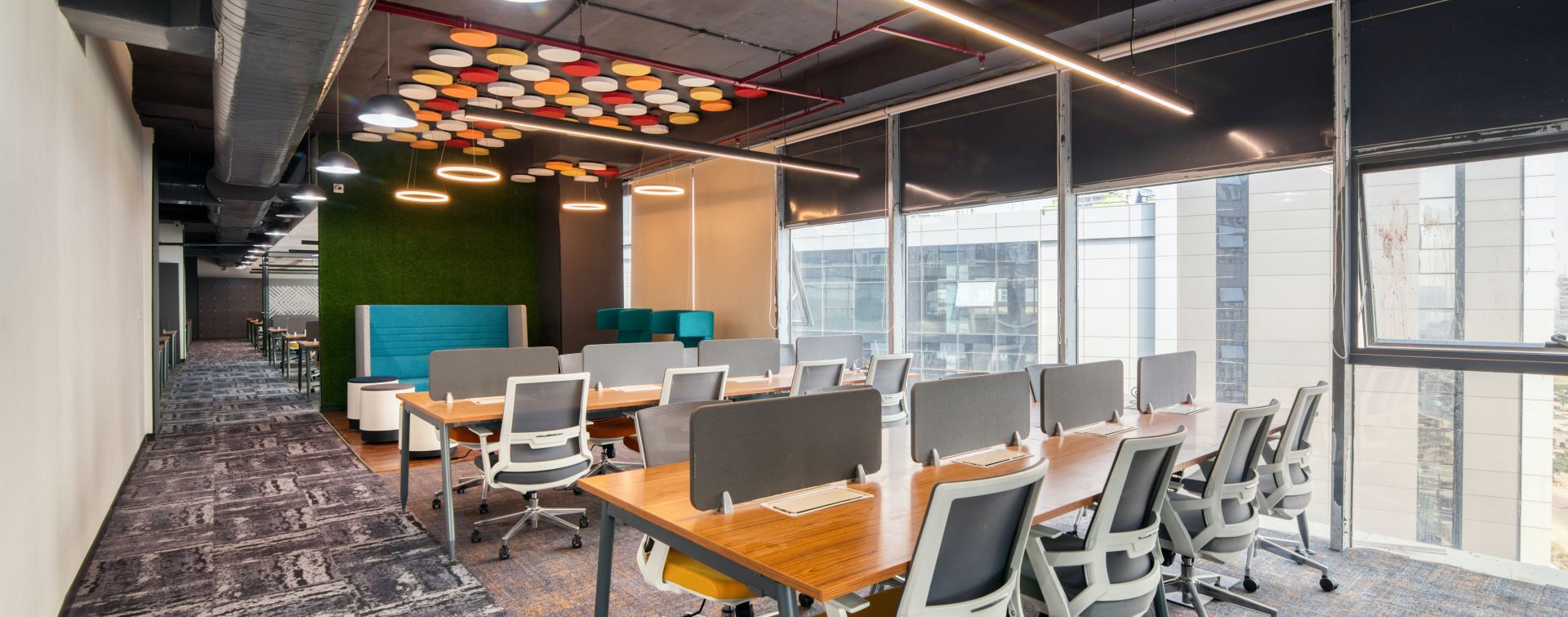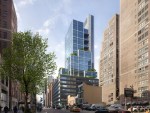Leasing (or buying) an office is one of the most important decisions you could make as a business owner, so you need to do it right. However, finding the ideal office space for your new business can be a daunting task. That’s because, as you’re exploring the market for a workplace that meets your needs, you need to account and plan for any future growth, while also creating an environment that enables your employees to be comfortable and productive.
There are also many aspects to consider, such as location, the amount of square footage you’ll need, the price of the lease, and any must-have amenities that are vital for your team. With that in mind, CommercialCafe gathered insights from a handful of seasoned and skilled leasing agents to help you make the right choice.
Meet our Experts

DeLea Becker
Founder, Broker at Beck-Reit Commercial Real Estate

James Betzer
Senior Vice President at The Remlinger Group

Ashley Flott
Commercial Real Estate Advisor at SVN Blackstream
What key factors should businesses consider when searching for the perfect office space? How have these factors evolved in recent years?
DeLea Becker
“Proximity to owner’s residence: Statistical data suggests that the location of an office space is often closely aligned with the residential location of the company’s owner. Generally, owners who frequent the office prefer to minimize their daily commute, ideally keeping it under 30 minutes.
Current office location: For companies that already occupy an office space, but are looking to relocate, the current location sets a precedent. Businesses often prefer to remain in the same general area to minimize disruptions for employees.
Employee residences and talent competition: The location of employee residences has taken on heightened importance in the current labor market, characterized by a talent shortage. Companies now consider the commuting distance for employees as a competitive edge in attracting and retaining talent.
Amenity-driven spaces: There has been a significant shift toward amenity-rich office environments. Previously the domain of tech companies, spaces featuring cafes, recreational areas and lounges are now more broadly adopted as businesses aim to lure employees back to the office.
Budget and market realities: It is crucial for businesses to maintain realistic expectations regarding what they can secure within their budget. Global or national market trends in office space may not necessarily reflect local conditions. Employing a broker with localized and specific market knowledge is essential for successful negotiations.
These factors have evolved considerably in recent years, influenced by changing work habits, employee expectations and broader economic conditions. Businesses need to adapt their criteria and expectations accordingly to secure office spaces that align with both their operational needs and long-term strategic goals.”
James Betzer
“Obviously, cost/budget. Whether looking for a 1,000-square-foot user or a 10,000-square-foot user, budget and cost are always paramount. Secondly, use the following questions: Does the space suit your needs? Is it big enough? Do you have growth projections? Does this space align with those projections?”
Ashley Flott
“Choosing the ‘perfect’ office space can be crucial for the success of a business. When searching for ideal space, factors to consider are location, accessibility, size, layout, budget, lease terms, infrastructure, amenities and security. These key factors have changed due to evolving workplace trends and technology. The COVID-19 pandemic accelerated trends like remote and hybrid work, emphasizing flexibility, technology and employee well-being. Balancing these needs are vital while searching for spaces that align with the needs and priorities of today’s businesses and their workforce.”
What are the recommended first steps for a business owner in search of the perfect office space?
DeLea Becker
“A business needs a clear understanding of what it really needs from the space and their overall budget. Businesses should take the following steps right at the beginning, or else the ideal space may come up right at the start of the search and the business might lose the opportunity to lease due to being ill-prepared. Being prepared on day one means that business owners can place themselves in a strong position to secure desired office space and with better lease terms.
Budget blueprint: The first critical step in the search for office space is to establish a clear budget. This should account not only for rent, but also for utilities, maintenance and other recurring expenses.
Financial preparedness: Companies should have their financial documents ready for review. Most landlords will request at least three years of income tax returns, as well as year-to-date profit and loss statements and balance sheets.
Broker vetting: The selection of a commercial real estate broker is a critical step. An experienced broker will have a rich understanding of the office space market in the desired area and a network that can be leveraged during negotiations.”
James Betzer
“Find a reputable broker who understands the market you are searching. No one ‘knows it all.’ For example, if someone wanted office space in Spokane, I would partner up with an expert in that market.
Secondly, identify what it is your business needs or what you are looking for. It’s OK to not know. But, do some work to identify the requirement.”
Ashley Flott
“Finding office space is a significant decision and can seem daunting for business owners not knowing where to start. The easiest way to start your process is by following these five steps: Begin by defining your space requirements, budget and location preferences. Then, conduct thorough market research to understand local real estate trends. Engage a commercial real estate agent for guidance and negotiations. Visit potential spaces to assess their suitability and, finally, perform your due diligence and financial analysis of all costs. Following this approach will help simplify the search process for suitable space.”
Location is often a critical aspect of office space. How do you help businesses assess the optimal location based on their industry, target market and other relevant factors?
DeLea Becker
“Amenities: Can the business go in simple office space or is hiring talent high on the priority list? Many companies are struggling to find talented employees and then lure them back into the office. Many businesses are seeking office space with amenities in the building or within walking distance.
Distance: Determine where [the] majority of your employees live. Employees are more likely to be happy/content with [a] job if they have less of a commute and [are] more likely to come into the office even when it is not required.
Parking: Many businesses require parking for their clients and often need it [to be] convenient. I own a 100-year-old commercial building three blocks from downtown Austin. We only have street parking and it is metered. [The] space works great for high-tech, creative companies that value walkability to bars and restaurants plus ‘cool vibe’ over parking. Over the years, I have had a couple professional services companies come tour. They always determine the property won’t work since there is not dedicated parking for their clients.”
James Betzer
“Location is a huge deciding factor. Usually, for office, this is decided around employment bases. Where are the employees coming from, and where will my future employees be coming from? I have seen small businesses pick slightly remote markets due to the commute concerns of the employees.”
Ashley Flott
“Assessing the best location for your office space involves a strategic approach. It’s not just about the building or budget. I take a deeper understanding of my client’s business objectives, industry and specific needs. I tend to ask questions about the nature of their operations, target market and growth projections. Different industries may have unique location requirements. For example, retail businesses benefit from high foot-traffic areas, while technology startups may prioritize proximity to talent and innovation hubs. When choosing an optimal location, defining the business’ target market, reviewing zoning regulations, and the customer or competitor demographics contribute to the location’s strengths and weaknesses.”
How could companies strike a balance between budget limitations and the desire to secure a workplace that fulfills both practical and aesthetic demands?
DeLea Becker
“Not all companies have budget constraints. Some business — like law firms — require being in downtown, class A office space. Other businesses might be budget-conscious due to several factors. [The] best advice I can give to businesses that have smaller budgets: Allow your broker to be creative. If [the] company does not need to be in [a] downtown skyscraper, class A office space, then they can go in retail space, flex space [or] business parks that are often a bit further out than downtown. A seasoned broker can help you find hidden gems — spaces that offer maximum bang for your buck, both practically and aesthetically. Sometimes, it’s the overlooked building that has the best potential, much like a sleeper in the NFL draft.”
James Betzer
“Budget and image are always huge factors for employers, [and] image for both clients and the talent they are trying to attract. It’s really the most subjective piece. Do you take over a space that’s less expensive, yet requires more tenant improvements? Do you move further outside what might be considered a core business district to save on cost? Maybe a less-desirable building with fewer amenities, yet still inside the core? These are just a few. [There are] so many subjective factors to consider.”
Ashley Flott
“Striking a balance between budget limitations and practical/aesthetic demands in your workplace is key. Prioritize essential needs, opt for cost-effective design, choose flexible spaces, compare options and negotiate lease terms with your agent. Sustainability can also lead to long-term savings. Strategizing carefully, you can create a functional and visually appealing workspace within your budget.”
What are some common mistakes businesses make when searching for office space? How can they avoid them?
DeLea Becker
“Below are not just common mistakes. They are also missed opportunities to secure better terms and positioning for your business.
‘The oversight of autonomy’ – forgoing professional brokerage assistance: The first cardinal mistake businesses make is neglecting to engage a commercial real estate broker for assistance in the search and negotiation process. Utilizing a broker’s specialized knowledge can save businesses both time and money, as well as prevent contractual missteps.
‘The financial fog’ – insufficient or unprepared financial documentation: Companies often underestimate the importance of having their financials readily available and organized. Failure to prepare appropriate financial documentation can stall or even halt the leasing process. If a business lacks sufficient years of operation or financial records, they should be prepared to pay an additional security deposit or consider less-premium spaces.
‘The novice trap’ – inexperienced broker selection: Another significant mistake is the appointment of a commercial real estate broker with limited experience in the relevant market, geographic area or property type. This lack of experience can result in missed opportunities and unfavorable terms.
‘The silence of expertise’ – ignoring broker advice: Businesses occasionally ignore the counsel provided by their representing commercial broker, despite the broker’s insider knowledge of available spaces, current rent rates and landlord expectations. It should be noted that, although brokers are usually compensated by landlords, tenants should be willing to pay a commission in cases where the desired property is off-market and the landlord isn’t covering brokerage fees.
‘The static strategy’ – neglecting to plan for growth: Finally, businesses often fail to consider their future growth trajectory when entering into lease agreements. While longer leases may offer more attractive rates, they can also restrict a company’s ability to grow or pivot. The terms of the lease should, therefore, offer some level of flexibility to accommodate shifts in business size or strategy. Or, if [a] company knows space needs will remain stable, [it] can take advantage of lower lease rates that a long lease offers.”
James Betzer
“Many officers/employees of companies are tasked to look for space. They don’t do this every day. Why would they? It’s not their primary job. So, many get caught up in the process. The ‘game,’ if you will. Anxiety, frustration, emotions, can all kick in during this process. The biggest thing to avoid is the energy (can be both positive or negative) of the process. This may be an emotional ride for a few weeks or months. Just remember you and your team will spend years — maybe even decades — in the space you choose.”
Ashley Flott
“Businesses can make several mistakes when searching for office space. Going over budget, neglecting future needs, rushing decisions, underestimating hidden costs, avoiding expert advice and lacking flexibility in leases are a few of the most common. To avoid these errors, set a clear budget, plan for growth, prioritize locations, conduct thorough research, account for all costs, seek professional guidance and opt for flexible lease terms. Avoiding these mistakes can help ensure a smoother and more successful search process.”
With the rise of remote work and flexible office arrangements, how has this affected the demand for traditional office spaces. What advice do you have for businesses considering hybrid work models?
DeLea Becker
“Traditional spaces are not out. They’re just evolving. The future, as I see it, is flexible. [The] hybrid work model for office space is popular and likely to remain. Full work from home can be beneficial for senior employees, but detrimental for junior employees. Mentorship, being able to ask questions and brainstorm together are critical for many businesses, and it simply isn’t the same effect/product when done 100% remote/online. Generally, people like to be around other people, although maybe not every day. Office space is doing well if it is in a good location and has amenities that the employees enjoy and value. A critical piece for office space going forward is meeting rooms, huddle rooms and technology to support. Most businesses that want employees back in the office are setting two to three days a week. Those days are often spent in conference rooms with groups and in the coffee and ping pong area where employees gather to commune. Consider offices with multipurpose spaces that can easily be converted from workstations to meeting rooms. This gives you the best of both worlds — without having to buy a whole new world.”
James Betzer
“Those are internal questions for the employer. We can assist but, ultimately, the long-term work model is their decision. Don’t get too caught up in today. This will be your space for the next five, 10, 20 years. Do you foresee this particular model working long-term? If we are not sure, we need to build some flexibility into this lease.”
Ashley Flott
“The rise of remote work and flexible arrangements has affected the demand for traditional office spaces. To adapt, businesses can assess employee preferences, invest in technology, explore flexible office solutions, redesign workspaces for collaboration, establish clear policies, measure performance, promote team-building and maintain transparent communication. Finding the right balance in a hybrid work model can be substantial for aligning with business goals and the employee as they evolve.”
What trends do you see in the office space market that businesses should be aware of when making decisions about their future workspace?
DeLea Becker
“Companies are struggling to hire talent and retain talent, [and] one way to battle is with the office space, amenities and company image.
Ergonomics: Businesses are investing in ergonomic furniture, adjustable desks and spaces that are designed to reduce physical strain.
LEED certification: Leadership in Energy and Environmental Design (LEED) is becoming a crucial factor for many businesses, not just as a commitment to sustainability, but also for the utility cost savings it brings in the long run. LEED-certified buildings have a lower carbon footprint and often feature innovative designs that take advantage of natural light, optimize energy usage and feature better indoor air quality. In the battle for talent, companies are starving to show that their business is conscious to ‘social and environmental issues.’
WELL certification: Certified spaces are designed to improve nutrition, fitness, mood, sleep patterns and performance.
Flexible space that can be reconfigured. I am doing a ground-up development in East Austin with 40,000 square feet of office space. We are putting in a raised floor so that all of the wires, HVAC, water supply and drainage is running under the floor. Floor tiles have the A/C vent in them and can easily be picked up and moved to reconfigure space. They also make for a cleaner and more organized look.
Multipurpose areas in the office. The modern employee values a good work/life balance, and the workspace itself is evolving to reflect that. Common areas are transforming into multifunctional spaces that can be a coffee lounge by day and a ping-pong arena by night. These spaces are about fostering community and sparking creative interactions among employees.”
James Betzer
“I see a need for more flexibility. I still see a need for flex workspaces. This is where the magic happens. For tenants to have more flexibility, landlords will require a premium due to unpredictable income. Let’s see how this all plays out.”
Ashley Flott
“Businesses should be aware of several evolving trends in the office space market when making decisions about their future workspace. These trends include the continued growth of convenient and hybrid work arrangements; the rising demand for flexible office solutions, like coworking spaces; a focus on creating collaborative office designs; increased reliance on technology for remote and in-person work; and the importance of fostering a strong company culture and communication for an inclusive work environment. Staying attuned to these trends will help businesses stay ahead of the progressive changes in the workforce and remain competitive in the workspace.”
For more useful information from experts specialized in various fields, check out our Expert Insights & Roundup Series.



